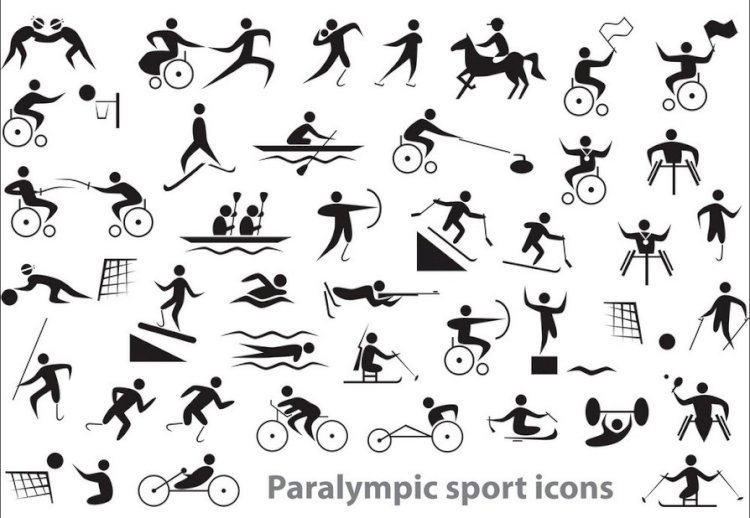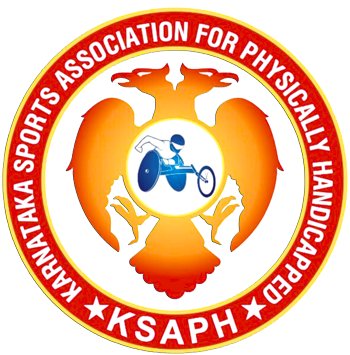Sport-by-Sport Classification
Sport-by-Sport Para Sports Classification

ATHLETICS
Athletes with physical impairments, visual impairments and intellectual impairments are eligible to compete. Athletics has the most classes of any sports due to the number of different impairment types.
Each class has two digits. The first indicates the nature of an athlete's impairment and the second the amount of functional ability. The lower the second number, the greater the impact of impairment on the athlete. A 'T' before each two-digit number refers to a track athlete, while an 'F' signifies an athlete who competes in the field.
11-13 – athletes with a visual impairment
20 – athletes with an intellectual impairment
31-38 – athletes with cerebral palsy, with 31-34 using a wheelchair to compete in track events or throw from a seated position in the field
40-46 – athletes with an impairment that affects their arms or legs, including amputees
51-58 – wheelchair racers or field athletes who throw from a seated position
Marathon
T12 – athletes with a visual impairment
T46 – athletes with an impairment that affects one arm, including amputees
T54 – wheelchair racers
SWIMMING
Athletes with physical, visual and intellectual impairments are eligible to compete. The classification also groups athletes in classes that are defined by the degree to which they are limited in their ability to perform each strokes. The number of different impairment types combined with the number of strokes means that swimming has a high number of classes.
1-10 – athletes with physical impairments. Class 1 swimmers' impairment signifies the greatest impact on their ability to execute strokes, while 10 is the least
11-13 – athletes with a visual impairment. Class 11 swimmers have little to no sight, while class 13 swimmers have limited sight
14 – athletes with an intellectual impairment
Breaststroke uses greater leg propulsion than other strokes, so athletes with a physical impairment have a different class for this event compared to freestyle, backstroke and butterfly.
S – freestyle, backstroke and butterfly events
SB – breaststroke events
SM – individual medley events
For example, an SB5 swimmer has an impairment that has a great impact on swimming breaststroke than a SB7 swimmer.
SHOOTING
Athletes with a physical impairment are eligible to compete. There are two classes:
SH1 – athletes who can support the weight of their firearm with no support and shoot using a rifle or pistol
SH2 – athletes who use a shooting stand for support as they have an impairment that affects one or both of their arms. They shoot using a rifle only
POWERLIFTING
Athletes with a physical impairment in their legs or hips, which prohibits them from competing in weightlifting, are eligible to compete.
Athletes are classed by body weight alone and competitors with different impairments play for the same medals.
ARCHERY
Athletes with a physical impairment are eligible to compete in the sport at the Paralympics. There are three classes, defined by the degree to which the competitors are limited in their ability to perform activities within the sport:
ST (standing) – athletes compete from a standing position
W1 (wheelchair 1) – athletes compete from a seated position and have an impairment that affects their arms, legs and trunk
W2 (wheelchair 2) – athletes compete for a seated position and have an impairment that affects their legs and trunk
JUDO
Athletes with a visual impairment are eligible to compete. Athletes compete against others from the same weight category and all different degrees of visual impairment compete together.
B1 athletes, classed as blind, have a red circle sewn on to the sleeves of their uniform, which enables officials to apply the rules according to their circumstances. For example, officials would not expect B1 athletes to recognise the edge of the contest area. When an athlete is deaf as well as visually impaired, a small blue circle will be attached to the back of the uniform.
TABLE TENNIS
Athletes with physical and intellectual impairments are eligible to compete. There are 11 classes:
1-5 – athletes with a physical impairment that affects their legs who compete sitting down. The lower the number, the more impact the impairment has on their ability to compete
6-10 – athletes with a physical impairment who compete from a standing position
11 – athletes with intellectual impairmen
SITTING VOLLEYBALL
Athletes with a physical impairment are eligible to compete. There are two categories of classification:
D (disabled) – athletes with an impairment that has a great impact
MD (minimally disabled) – athletes with an impairment that has a lesser impact
MD athletes may have played standing volleyball previously but picked up a significant injury to their ankle or knee, making them eligible for the sport. A maximum of one MD player may be on the court for each team at any one time.
WHEELCHAIR BASKETBALL
Athletes with a physical impairment that affects at least one leg are eligible to compete. Athletes are grouped into eight classes. The higher the points total, the more function that athlete has on the court.
The range goes from 1.0 for a player with the least physical function, increasing by 0.5 per class through to 4.5. Teams cannot have a total on-court point value of more than 14 for all five players during play.
WHEELCHAIR FENCING
Athletes with a physical impairment that affects at least one leg or foot are eligible to compete in the sport at the Paralympics. There are two classes:
Category A – athletes have good trunk control and their fencing arm is not affected by their impairment
Category B – athletes have an impairment that affects either their trunk or fencing arm
WHEELCHAIR RUGBY
Athletes with a physical impairment that affects the arms and legs are eligible to compete. Athletes are grouped into seven classes, defined by the degree to which they are limited in their ability to perform activities within the sport The higher the points total, the more function that athlete has on the court.
The range goes from 0.5 for a player with the least physical function, increasing by 0.5 per class through to 4.5. Teams cannot have a total on-court point value of more than 8 for all four players during play. For every female player a team fields on court, the maximum points level goes up by 0.5
WHEELCHAIR TENNIS
Athletes with a physical impairment that affects their ability to move around the court and prevents them from competing with able-bodied tennis players are eligible to compete.
Athletes are grouped into two classes:
Open – athletes with an impairment of one or both legs that does not affect their arms or hands
Quad – athletes have an impairment that affects their arms and legs, which limits their ability to handle the racket and to move the wheelchair compared with the open class. Men and women compete together in these events.










